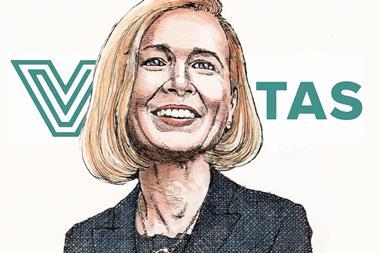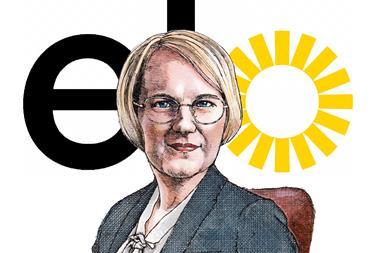A common claim among promoters of hedge fund products is that these investment vehicles generate ‘absolute returns'. This is because hedge funds offer positive returns over the risk-free rate without being exposed to market risk. The rationale is that the excess return generated by beta-neutral strategies is a reward for manager skill, or alpha, rather than a reward for taking on risks.
Looking at return data in recent years, however, investors can easily see that hedge funds are definitely not riskless investments that deliver positive returns every month. On the contrary, returns vary according to market conditions. This may be linked to exposure to risk factors such as implied volatility, credit risk, changes in the yield curve, commodity and currency risk, equity market returns and equity style factors. Exposure to these risk factors varies greatly for different hedge fund strategies.
The low correlation of hedge fund returns with equity and bond returns can be linked to their exposure to these risk factors, which are different from the risk factors driving stock and bond returns. Low correlation, however, does not mean that hedge funds offer ‘absolute returns'. Hedge fund returns depend on the varying risk premia connected with the risk factors to which they are exposed.
As a consequence, hedge funds are not necessarily restricted to being included in the satellite portfolio as absolute return strategies. In fact, including hedge funds in the satellite in order to outperform the (traditional) core portfolio probably accounts for most of the disappointment with hedge funds, since these do not outperform the traditional asset classes in all market conditions.
Institutional investors, with their natural focus on risk management, have paid a great deal of attention to operational risk issues with hedge funds. Possible approaches to mitigating the operational risks of hedge funds are the conducting of proper due diligence and the selecting of funds that present basic characteristics such as independent administration, independent risk control and appropriate back-office technology.
However, conducting operational risk measurement and management may be an expensive option for institutional investors. In particular, advanced managed account platforms are now available, offering a choice of hedge funds while mitigating the main operational risks. Such managed account platforms address the most important risk factors identified in hedge fund debacles (fraudulent or otherwise). No investor can expect to be fully insured against deliberate fraud or operational risks. It is, however, very important to stress that a managed account platform accompanied by terms and conditions that allow the risk management team to instantly cease the relationship with the manager and the use of a systematic and independent valuation and risk monitoring function can allow for severe curtailment of several sources of risk, which represent 85% of the hedge fund debacles analysed:
❏ Misappropriation:30% of cases analysed;
❏ Misrepresentation: 41% of cases analysed;
❏ Trading outside of OM: 14% of cases analysed.
ather than seeing hedge funds as return enhancers, they can be included in the asset liability management (ALM) process of institutional investors. An initial approach would be to consider hedge funds as an additional asset class that can be added to stocks and bonds in a surplus optimisation exercise. This approach, however, presents a number of difficulties. First, there is a lack of satisfactory models for representing the dynamics of hedge fund returns that can be used in Monte Carlo simulation. Second, hedge funds do not constitute a homogeneous asset class, but a set of diverse investment strategies. Consequently, hedge funds should be treated not as an addition but as a complement to traditional asset classes. Therefore, hedge funds only enter the surplus optimisation exercise through the impact they have on risk parameter estimates for stocks and bonds.
A surplus optimisation model is basically founded by optimising the match between the asset and liability sides of financial structures in companies. In the context of this exercise, we consider three asset classes (in addition to hedge funds): stocks, nominal bonds and inflation-indexed bonds (TIPS).
The purpose of surplus optimisation is to find the allocation that minimises the relative expected shortfall (SF) of the asset portfolio at a 10-year horizon with respect to liabilities beyond a certain target horizon.
Previous research has actually shown that some but not all hedge fund strategies mix well with either stocks or bonds in terms of risk reduction benefits. They show that adding a suitably designed portfolio (labelled stock or bond diversifier) allows the risk of the overall portfolio to be reduced significantly. We use the volatility that results from adding a certain proportion of hedge funds to the traditional asset classes in the surplus optimisation exercise.
For the optimal portfolio allocation as well as the benefits in terms of relative expected shortfall and probability of extreme losses, we obtain the results below.
From these figures, we see that the introduction of hedge funds allows for a significant improvement in the risk management process in an ALM context. For example, introducing 25% of hedge funds in the stock and bond allocation portions of the investor's portfolio allows for a decrease of 7.82% in the expected shortfall. The impact is even more spectacular with a focus on extreme risks, with the introduction of 25% of hedge funds in the stock/bond allocation allowing for a 27.02% decrease in the probability of a shortfall greater than 25% (i.e. deficit worse than 75%).
An improvement in expected relative shortfall and probability of a shortfall greater than 25% as a function of the effective proportion allocated to hedge funds might be seen as follows: when the effective allocation to hedge funds is 2% the improvement in relative expected shortfall is around 1% and, in terms of the probability of extreme loss, close to 5%. When the effective allocation to hedge funds is 7%, the improvement in relative expected shortfall is close to 5%, while the improvement in probability of extreme loss is around 12%. With an effective allocation to hedge funds of 12%, the improvement in relative expected shortfall is around 8%, while the improvement in probability of extreme loss is close to 25%. When the effective allocation to hedge funds is at 17%, the improvement in relative expected shortfall is around 10%, while the improvement in the probability of extreme loss is close to 40%.
The results presented above contradict the perception that hedge funds do not offer significant diversification potential. In fact, it can be argued that reluctance of some institutional investors to allocate to hedge funds stems from the way they look at hedge funds as simple return enhancement strategies for the satellite portfolio. Integrating hedge funds properly in the ALM process shows their true potential, wielding tremendous risk reduction benefits.
Felix Goltz is a senior research engineer with the EDHEC Risk and Asset Management Research Centre












No comments yet